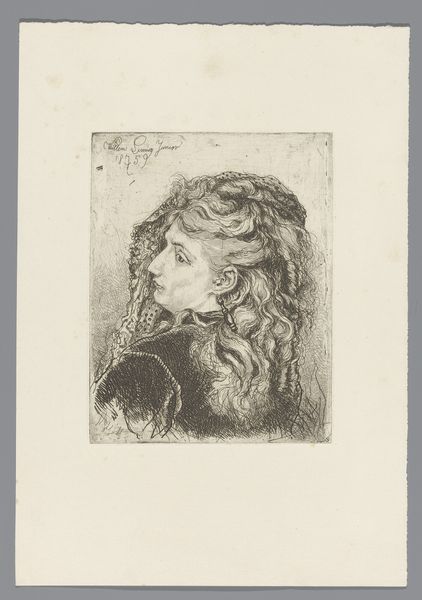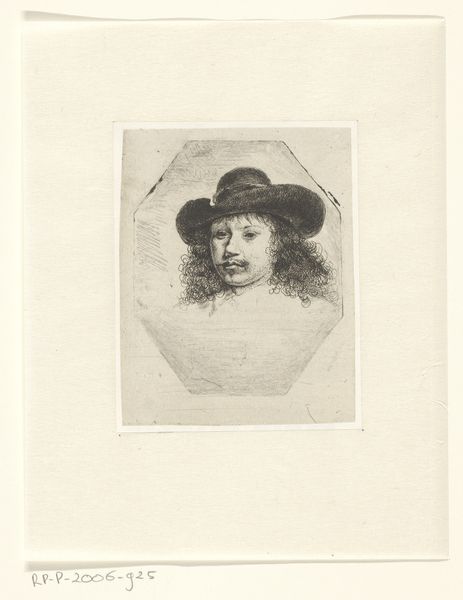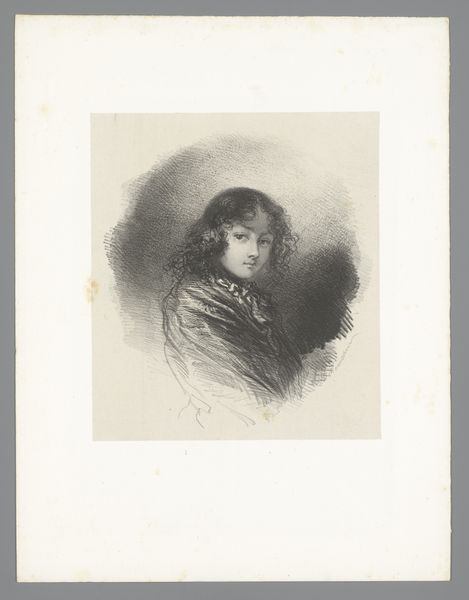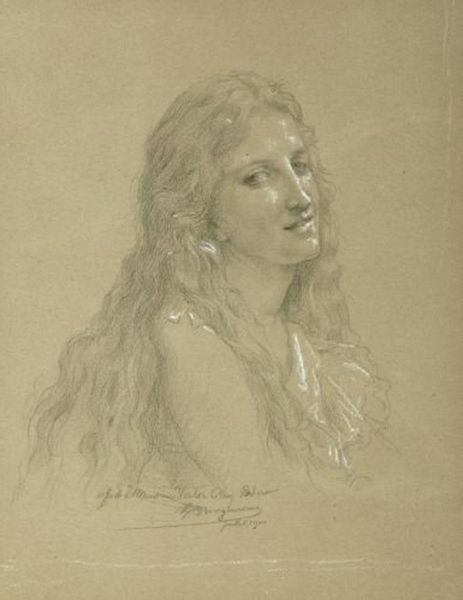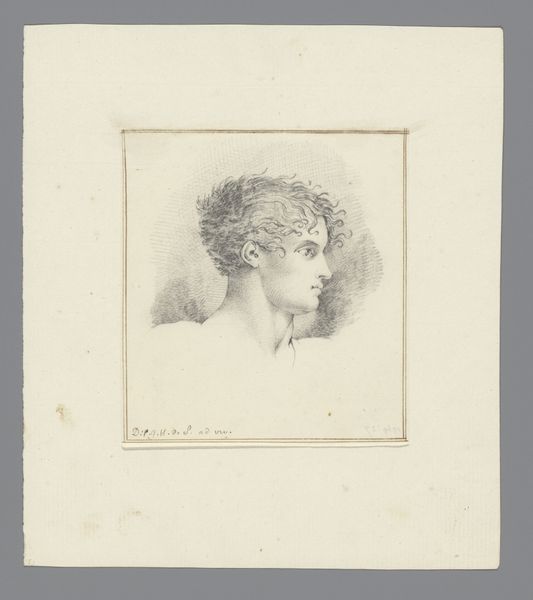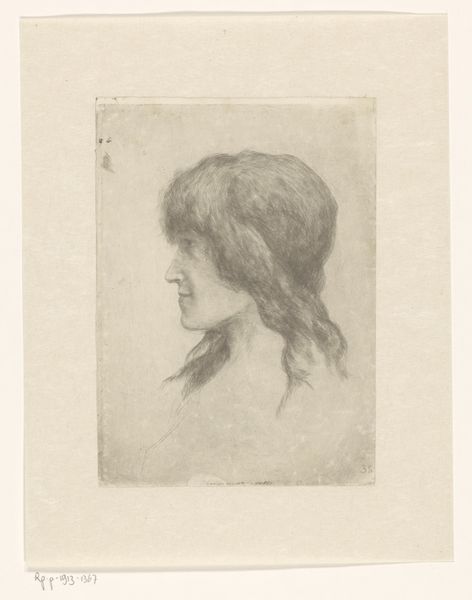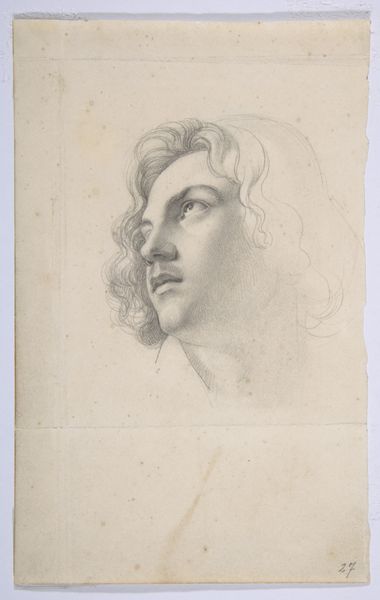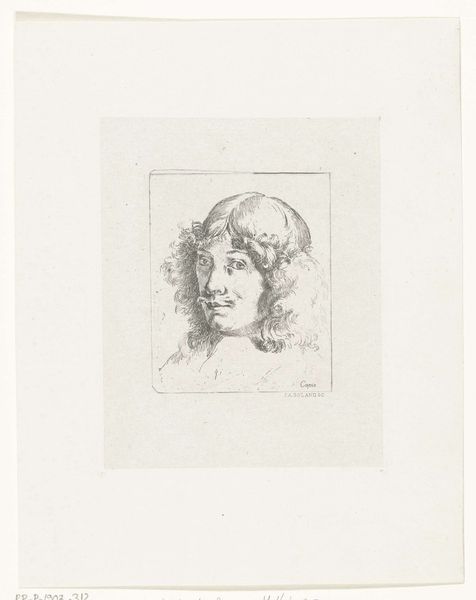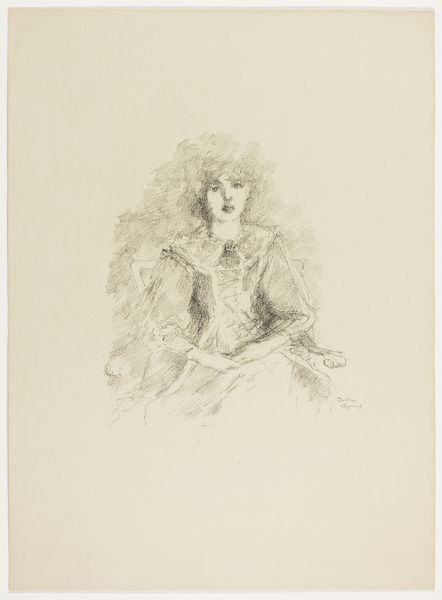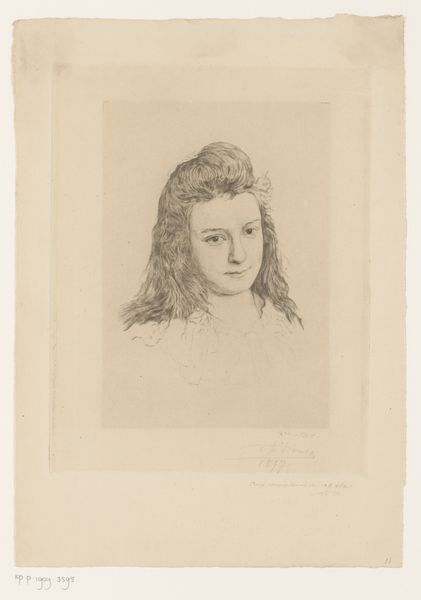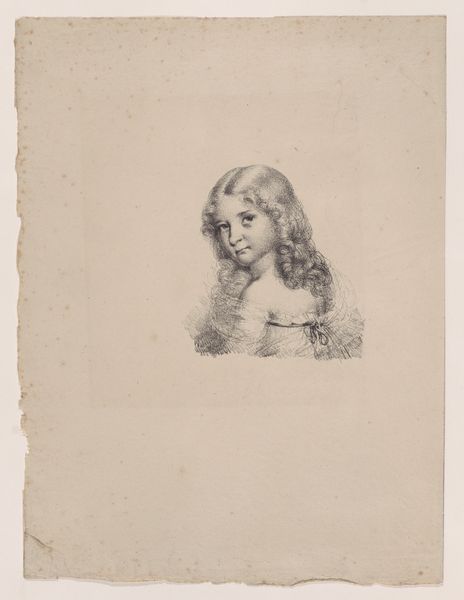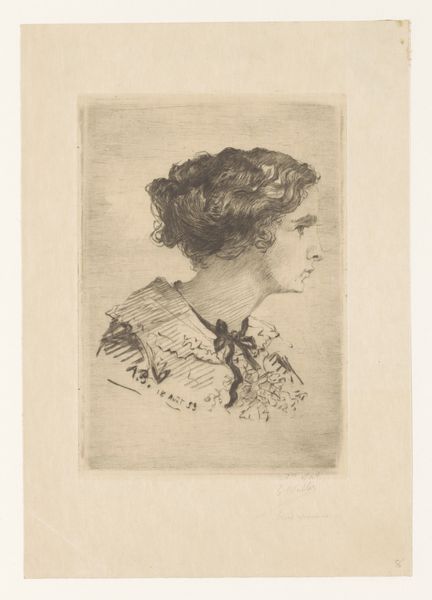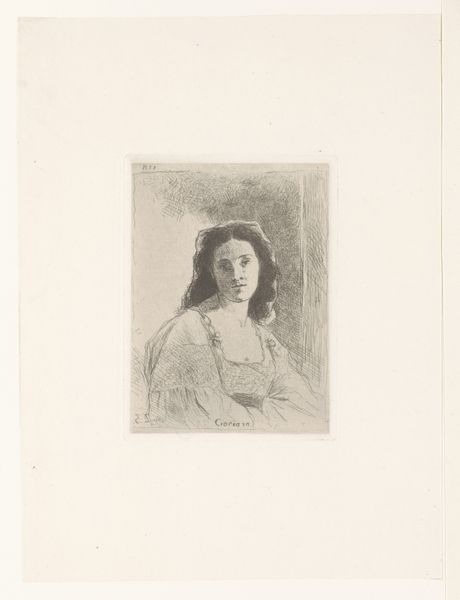
drawing, pencil
#
portrait
#
pencil drawn
#
drawing
#
pencil sketch
#
figuration
#
pencil drawing
#
pencil
#
realism
Dimensions: height 238 mm, width 190 mm
Copyright: Rijks Museum: Open Domain
Curator: Looking at "Portret van een onbekend meisje", made by Piet van Engelen likely between 1873 and 1910, rendered beautifully in pencil. It captures the essence of a young girl. What are your first impressions? Editor: Melancholy. It’s the gaze, isn't it? Those eyes tell a story, even if we don't know what it is. The softness of the pencil work only enhances the feeling; it’s almost like a memory fading. Curator: That feeling speaks volumes about how portraits functioned, particularly in this period. They often weren't just about representation, but memorialization, social standing, sometimes even idealized notions of youth and beauty that reflected societal values. This young woman would have had her likeness immortalized, so to speak. Editor: Immortalized, but still anonymous, right? There’s a potent irony there. I imagine her perhaps dreaming of escaping whatever role was set for her, searching for something beyond the frame. That soft hair especially… it feels unbound, contrasting the potential rigidity of her position. Curator: Interesting interpretation! What you're picking up on aligns somewhat with the artistic trends emerging around the turn of the century: Realism's attempt to show the individual without the aristocratic fanfare. Artists sought authenticity, but were still products of their time. How accessible would art depicting raw emotion truly be when constrained by Victorian social mores? Editor: True, a constant tension! This pencil almost seems to whisper those societal demands while it captures her resistance to them. Think about what happens *outside* the edges of this restrained, carefully composed image. Was she playing the piano or helping her mother sew before she was commanded to pose for her portrait? Was she sneaking out to read a romance novel or to climb trees when nobody was watching? I imagine someone ready to break free. Curator: And in the end, perhaps that tension makes the work resonate. The very act of creating a portrait places the subject within the societal structures while also allowing us, generations later, to project our own meanings onto it. It's an historical artifact and a stage for our own feelings and social questioning. Editor: Precisely. It's not just *her* portrait. It’s a mirror reflecting who we are now, and what we still hope to see. That quiet resistance still calls out to us.
Comments
No comments
Be the first to comment and join the conversation on the ultimate creative platform.
